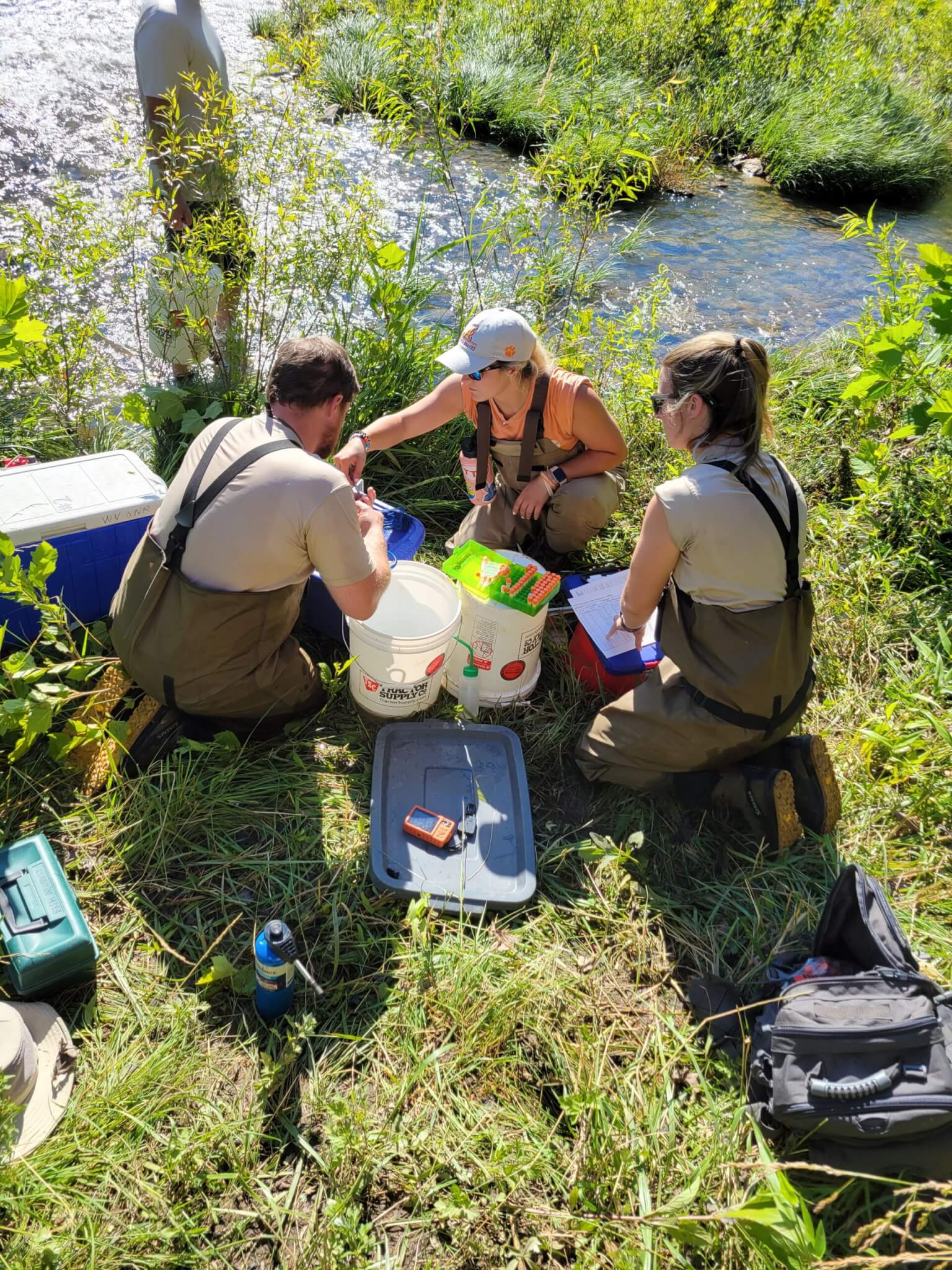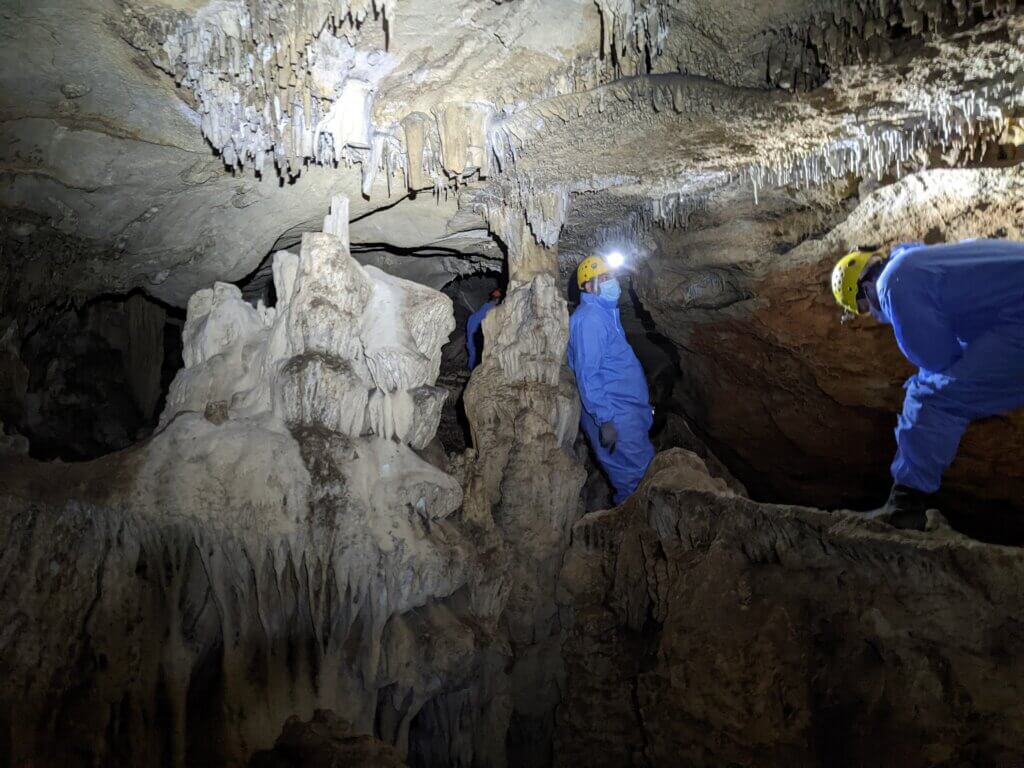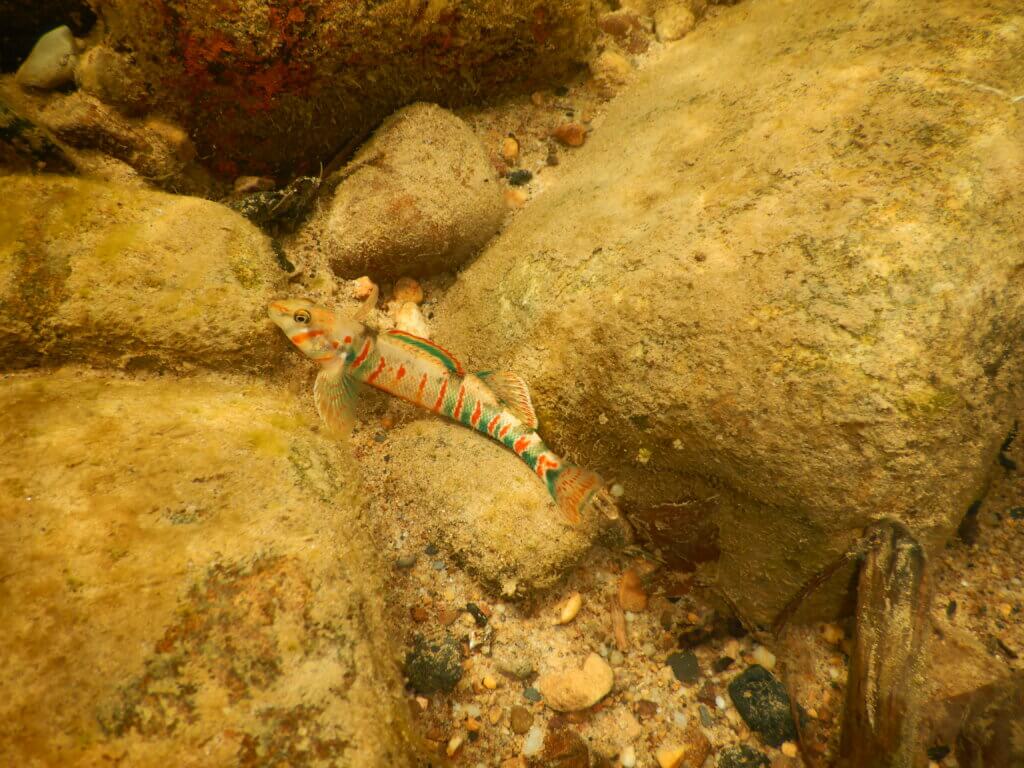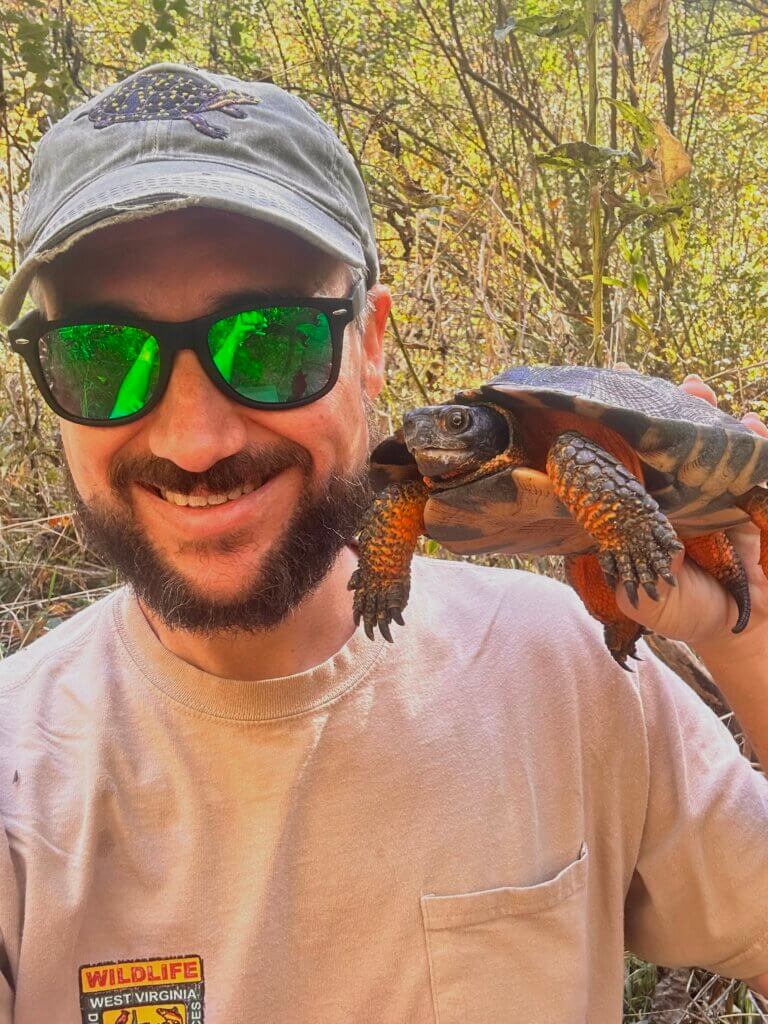
The West Virginia Division of Natural Resources’ Wildlife Diversity Unit works diligently to converse and protect our lesser-known and more vulnerable species.
This story was originally published in the June 2024 issue of Wonderful West Virginia. To subscribe, visit wonderfulwv.com.
Written by Devin Lacy

The West Virginia Division of Natural Resources (WVDNR) is a mecca for the protection, conservation, and growth of one of our state’s biggest assets: its natural resources. From the most sprawling forests and winding rivers to the smallest insects and seeds, WVDNR staff see it all while encouraging others to see and appreciate it, too.
WVDNR is split into three primary divisions that divide up the extensive work needed to cultivate the natural entities found within our borders. They are the Wildlife Resources Section, the West Virginia State Parks Section, and the Law Enforcement Section. Each section retains its own focus and mission, while the three work together to serve the larger goal of conserving and protecting the wildlife, lands, and resources that surround us.
Out of the three, the Wildlife Resources Section is the one whose reach you are most likely to come across. “Our primary mission is to manage state wildlife resources for the benefit of our citizens,” says Wildlife Resources Section Chief Paul Johansen. On the ground across the state, Wildlife Resources employees are out there keeping a close eye on the flora and fauna that call this state home while providing a variety of opportunities for education and enjoyment.
The Who, What, and Why
The work of the Wildlife Resources Section takes place under three main programs. The Game Management Unit focuses on what its name suggests: wild game. These are species that are typically hunted or trapped, like deer, rabbit, and turkey. The unit provides services to game populations—and thus hunters—through programs such as managing over 1.6 million acres of public lands (Wildlife Management Areas). The Fish Management Unit manages nearly 100,000 miles of rivers and streams throughout the state and more than 22,000 acres of impoundments. Through fish stockings and habitat development, this unit works to provide fishing opportunities for West Virginia anglers as well as inviting travelers to get in on the action.
“The state of West Virginia has the responsibility to oversee the management of all wildlife in West Virginia, including what we don’t hunt or fish for, which is the majority of what’s out there,” says Scott Warner, assistant chief of the Wildlife Diversity Unit. “Most people think about deer, bear, and small mammals, but over 90% of what we have, we can’t hunt or fish for.”


The Wildlife Diversity Unit, once called Non-Game Unit, is still occasionally referred to in that way, he says. However, the switch to Wildlife Diversity came from the fact that its scope of coverage is truly a variety of creatures and plants, from pollinators and their flora to migratory animals and even species under conservation risk that might jump the unit line, like the candy darter.
And it’s not just the species that are diverse, but the people and the work, too. “We have a lot of really great staff that do great work,” Warner says. “A lot of our biologists are also specialists, so there’s diversity in the type of work we do.” Some work on birds only, like the state ornithologist. Pollinator biologists work with the Department of Agriculture and private lands to create habitats and do monitoring of West Virginia’s more critical pollinator species. Some biologists even work to study mussels, conducting surveys for groups like the U.S. Fish and Wildlife Service and the West Virginia Land Trust. “If you go to one of our meetings, there are usually about 30 of us, and we’re all specialists in something a little unique.”



The Call of Citizen Science
Have you ever wanted to join WVDNR biologists in gathering data on our native wildlife and plant species? Have you ever wanted to know more about the way those species live and interact with the natural world around them right in our own backyards? Citizen science might just be the thing you’re looking for.
According to WVDNR, “citizen science” is defined as “volunteer-driven scientific research.” Many of the citizen science surveys take place under the umbrella of the Wildlife Diversity Unit and are focused on the species that fall under its management, although some surveys have been known to involve Game Management species in the past. “It really serves two purposes: to provide additional scientific data to better manage populations and to engage with the public—to make those contacts and build those relationships with our citizens,” Johansen says. “The interest in our wildlife in West Virginia is really high, and a lot of it has to do with the traditional values that we have towards the state and its natural resources, in particular the wildlife. It gives us the opportunity to really engage with those who have an interest in the project.”
Warner agrees. “West Virginians as a whole are really connected to our heritage. They are really intrigued by what we have.” Citizen scientists have also proven themselves to be a vital asset to biologists and research teams around the state. “When we want to go out and do a quick ‘bio blitz,’ the general public can be just as successful as we are at capturing information quickly,” he says. “We’re using that information and enthusiasm to make better wildlife management decisions. Because of the support we have from the state, I feel our resources are in better shape than they have been before.”

Numerous citizen science surveys are underway at this very moment. Biologists are looking for citizens like you to gather information on river otters to help them better identify and manage their distribution and population numbers throughout the state. An in-progress firefly survey is also looking for participants to report sightings in and along state parks, forests, and rail-trails—to learn how you can participate in that survey, read Stan Bumgardner’s story, “Light Up West Virginia,” on page 4.
Protecting Our Natural Heritage
Wildlife Diversity Unit staff operate a variety of programs—the Natural Area Program; the Rare, Threatened, and Endangered Species Program; the Zoology Program; and the Aquatic Community Assessment and Restoration Program, to name just a few. And the research and information gathered from their various programs is filtered into one place in particular: the Wildlife Diversity Unit’s West Virginia Natural Heritage Program (WVNHP).
The WVNHP is “the keeper of all the data,” according to Warner. “We have tons of data from surveys and consultants or research universities. It all gets submitted back to us and put in the database, and the WVNHP oversees it.”
This data is then used for a variety of purposes, directed in large part to identifying and managing unique habitats as well as of importance to the state. “We have an incredibly diverse suite of habitats in West Virginia, all housed in the Appalachian Mountain ecological regions,” says Johansen. “There is a tremendous diversity there, and the program is designed to identify and better manage those areas.”

Become a Master Naturalist
The West Virginia Master Naturalist Program is a great way for West Virginia residents to get even more involved in the conservation of our state’s natural resources. It was started in 2003 under the scope of the Private Land Conservation Program within the Wildlife Diversity Unit, in partnership with West Virginia State Parks and WVU Extension. According to WVDNR, the program exists to “train interested people in the fundamentals of natural history, nature interpretation, and teaching, and to instill in them an appreciation of the importance of responsible environmental stewardship.”
As certified master naturalists, citizens can take advantage of opportunities to more closely assist with research, development, and education. Certification entails 62 hours of classroom and field experience in addition to 30 hours of volunteer service. Multiple chapters are located throughout the state.
To learn more about the West Virginia Master Naturalist Program, visit mnofwv.org.
The WVNHP also allows WVDNR to assist state and federal government agencies with understanding the current conditions of the state’s wildlife. For example, if a species is facing threat and the Wildlife Diversity Unit is approached by the U.S. Fish and Wildlife Service to see if a species should be added to the national list, data from the WVNHP can be presented to make a more informed decision. “It’s also our responsibility for the analysis of that data and making sure it is up to date. We’re not using stuff from the 1940s, but from 2024, for better management decisions,” Warner says.

According to WVDNR’s “Annual Report 2022–2023,” 568 new occurrences were added to the WVNHP’s biotics database. Of that number, 172 were vertebrate animals and 160 were invertebrates, with 45 communities and 191 plants added as well. More than 2,000 entries were updated.
“What makes West Virginia special is that it does provide a wide variety of species—it’s an ecological hotspot for diversity. At the end of the day, the success of the program is directly related to the cultural values we hold so dear and our recognition of how important our wildlife is,” Johansen notes. “I’m really proud of the folks that work within it. They’re passionate about their work and what they do.”
A New Opportunity for Citizen Science
WVDNR’s Wildlife Diversity team needs your help in gathering information regarding some of West Virginia’s favorite amphibians. In its first year, this new citizen science project asks anglers and outdoor enthusiasts to keep a weathered eye on the water for hellbenders and mudpuppies—large, distinctive salamanders typically found in streams and rivers throughout the state that are declining in number. “If you haven’t seen a hellbender, you have no clue what to expect. If you have seen one, you’ll never forget it,” says Warner. “They’re so ugly, they’re kind of cute.”
When one is spotted, please note its location and any other observations you can make. Then, go to tinyurl.com/wvsalamandersurvey and complete the form to submit your findings to the Wildlife Diversity Unit at WVDNR. Information received allows WVDNR biologists to better understand the distribution and status of these two salamanders in the Mountain State.
You can learn more about the survey and its subjects by visiting tinyurl.com/wvsalamanderinfo











